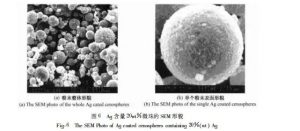The element hydrogen is the most commonly found element in the universe. However, hydrogen molecules (H2) are not readily available. As such, it is an energy carrier as opposed to a fuel. It can be used in various mobile applications such as (1) in proton exchange membrane (PEM) fuel cell for transportation systems or mobile devices (e.g., laptops and cell phones) where it catalytically reacts with oxygen to produce water and electricity, (2) in internal combustion engines for surface transportation where it can be mixed with liquid fuel, or (3) in rocket propulsion [3]. Akunets et al.
Also suggested using a mixture of liquid oxygen and hydrogen in polymer microballoons for jet engine fuel. Hydrogen storage for such mobile applications is arguably one of the main technological challenges for a viable hydrogen economy.
This chapter focuses on hydrogen storage in hollow glass microspheres or microcapsules in general. First, various power sources and fuels for mobile applications are compared based on their energy densities. Then, competing hydrogen storage technologies are reviewed. Moreover, principles, design parameters, material considerations, and performances associated with hydrogen storage in hollow glass microspheres are discuss
